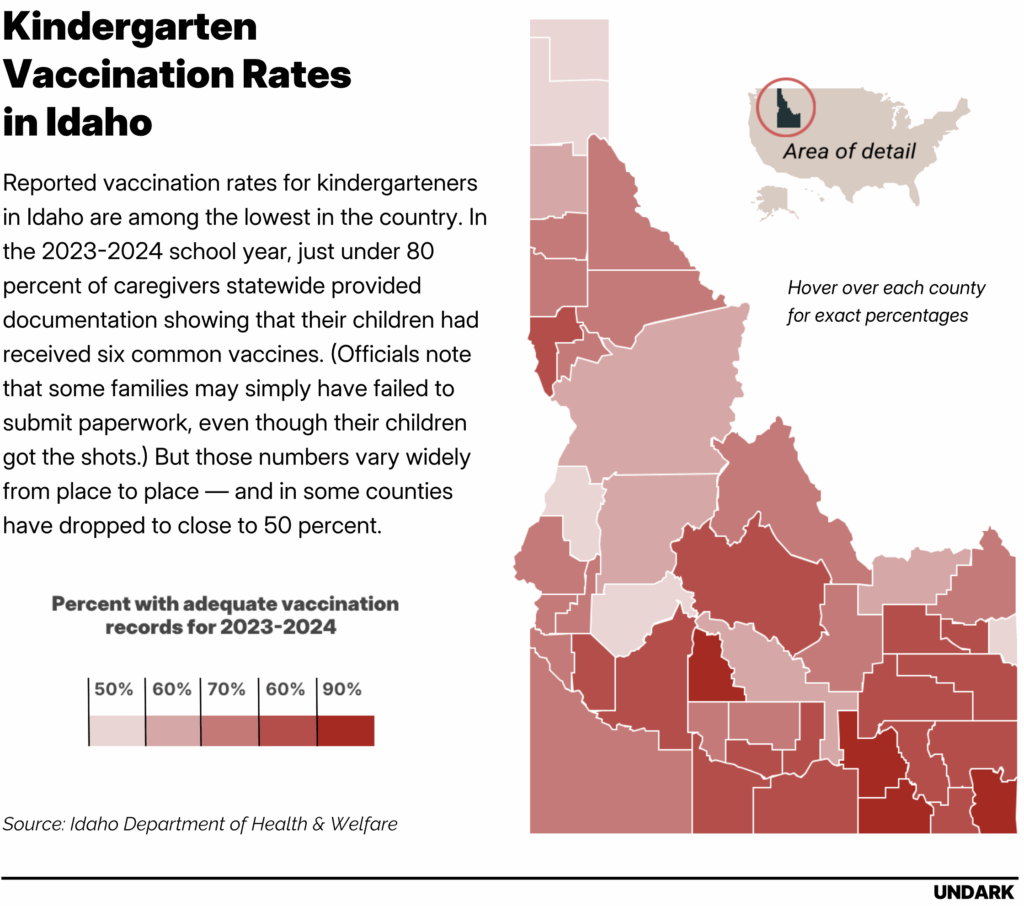“Red meat allergy” from tick bites is spreading both in US and globally
Remember to check for ticks after your next stroll through the woods or long grasses.
Hours after savoring that perfectly grilled steak on a beautiful summer evening, your body turns traitor, declaring war on the very meal you just enjoyed. You begin to feel excruciating itchiness, pain, or even swelling that can escalate to the point of requiring emergency care.
The culprit isn’t food poisoning—it’s the fallout from a tick bite you may have gotten months earlier and didn’t even notice.
This delayed allergic reaction is called alpha-gal syndrome. While it’s commonly called the “red meat allergy,” that nickname is misleading, because alpha-gal syndrome can cause strong reactions to many products, beyond just red meat.
The syndrome is also rapidly spreading in the US and around the globe. The Centers for Disease Control and Prevention estimates as many as 450,000 people in the US may have it. And it’s carried by many more tick species than most people realize.
Cases of suspected alpha-gal syndrome based on confirmed laboratory evidence. Credit: CDC
What is alpha-gal syndrome?
Alpha-gal syndrome is actually an allergy to a sugar molecule with a tongue-twisting name: galactose-alpha-1,3-galactose, shortened to alpha-gal.
The alpha-gal sugar molecule exists in the tissues of most mammals, including cows, pigs, deer, and rabbits. But it’s absent in humans. When a big dose of alpha-gal gets into your bloodstream through a tick bite, it can send your immune system into overdrive to generate antibodies against alpha-gal. In later exposure to foods containing alpha-gal, your immune system might then launch an inappropriate allergic response.
A lone star tick (Amblyomma americanum). The tick can cause alpha-gal syndrome as well as carry other diseases, including ehrlichiosis, tularemia, and Southern tick-associated rash illness. Credit: wildpixel/Getty
Often this allergy is triggered by eating red meat. But the allergy also can be set off by exposure to a range of other animal-based products, including dairy products, gelatin (think Jell-O or gummy bears), medications, and even some personal care items. The drug heparin, used to prevent blood clotting during surgery, is extracted from pig intestines, and its use has triggered a dangerous reaction in some people with alpha-gal syndrome.
Once you have alpha-gal syndrome, it’s possible to get over the allergy if you can modify your diet enough to avoid triggering another reaction for a few years and also avoid more tick bites. But that takes time and careful attention to the less obvious triggers that you might be exposed to.
Why more people are being diagnosed
As an entomologist who studies bugs and the diseases they transmit, what I find alarming is how rapidly this allergy is spreading around the globe.
Several years ago, experts thought alpha-gal syndrome was primarily limited to the Southeastern US because it was largely associated with the geographical range of the lone star tick.
However, both local and global reports have now identified many different tick species across six continents that are capable of causing alpha-gal syndrome, including the prolific black-legged tick, or deer tick, which also transmits Lyme disease.
These ticks lurk in yards and urban parks, as well as forests where they can stealthily grab onto hikers when they touch tick-infested vegetation. As tick populations boom with growing deer and human populations, the number of people with alpha-gal syndrome is escalating.
Why ticks are blamed for alpha-gal syndrome
There are a few theories on how a tick bite triggers alpha-gal syndrome and why only a small proportion of people bitten develop the allergy. To understand the theories, it helps to understand what happens as a tick starts feeding on you.
When a tick finds you, it typically looks for a warm, dark area to hide and attach itself to your body. Then its serrated teeth chew through your skin with rapid sawing motions.
As it excavates deeper into your skin, the tick deploys a barbed feeding tube, like a miniature drilling rig, and it secretes a biological cement that anchors its head into its new tunnel.
A tick’s mouth is barbed so it can stay embedded in your skin as it draws blood over hours and sometimes days. Credit: National Institute of Allergy and Infectious Diseases
Once secure, the tick activates its pumping station, injecting copious amounts of saliva containing anesthetics, blood thinners, and, sometimes, alpha-gal sugars into the wound so it can feed undetected, sometimes for days.
One theory about how a tick bite causes alpha-gal syndrome is linked to the enormous quantity of tick saliva released during feeding, which activates the body’s strong immune response. Another suggests how the skin is damaged as the tick feeds and the possible effect of the tick’s regurgitated stomach contents into the bite site are to blame. Or it may be a combination of these and other triggers. Scientists are still investigating the causes.
What an allergic reaction feels like
The allergy doesn’t begin right away. Typically, one to three months after the sensitizing tick bite, a person with alpha-gal syndrome has their first disturbing reaction.
Alpha-gal syndrome produces symptoms that range from hives or swelling to crushing abdominal pain, violent nausea, or even life-threatening anaphylactic shock. The symptoms usually start two to six hours after a person has ingested a meat product containing alpha-gal.
Due to a general lack of awareness about the allergy, however, doctors can easily miss the diagnosis. A study in 2022 found that 42 percent of US health care practitioners had never heard of alpha-gal syndrome. A decade ago, people with alpha-gal syndrome might go years before the cause of their symptoms was accurately diagnosed. Today, the diagnosis is faster in areas where doctors are familiar with the syndrome, but in many parts of the country it can still take time and multiple doctor visits.
Unfortunately, with every additional tick bite or exposure to food or products containing alpha-gal, the allergy can increase in severity.
The lone star tick isn’t the only one that can cause alpha-gal syndrome. Black-legged ticks have also been connected to cases. Credit: US Army
If you think you have alpha-gal syndrome
If you suspect you may have alpha-gal syndrome, the first step is to discuss the possibility with your doctor and ask them to order a simple blood test to measure whether your immune system is reacting to alpha-gal.
If you test positive, the main strategy for managing the allergy is to avoid eating any food product from a mammal, including milk and cheese, as well as other potential triggers, such as more tick bites.
Read labels carefully. Some products contain additives such as carrageenan, which is derived from red algae and contains alpha-gal.
In extreme cases, people with alpha-gal syndrome may need to carry an EpiPen to prevent anaphylactic shock. Reputable websites, such as the CDC and alphagalinformation.org, can provide more information and advice.
Mysteries remain as alpha-gal syndrome spreads
Since alpha-gal syndrome was first formally documented in the early 2000s, scientists have made progress in understanding this puzzling condition. Researchers have connected the allergy to specific tick bites and found that people with the allergy can have a higher risk of heart disease, even without allergy symptoms.
But important mysteries remain.
Scientists are still figuring out exactly how the tick bite tricks the human immune system and why tick saliva is a trigger for only some people. With growing public interest in alpha-gal syndrome, the next decade could bring breakthroughs in preventing, diagnosing, and treating this condition.
For now, the next time you are strolling in the woods or in long grasses, remember to check for ticks on your body, wear long sleeves, long pants, and tick repellent to protect yourself from these bloodthirsty hitchhikers. If you do get bitten by a tick, watch out for odd allergic symptoms to appear a few hours after your next steak or handful of gummy bears.
Lee Rafuse Haines is associate research professor of molecular parasitology and medical entomology at University of Notre Dame.
This article is republished from The Conversation under a Creative Commons license. Read the original article.
The Conversation is an independent source of news and views, sourced from the academic and research community. Our team of editors work with these experts to share their knowledge with the wider public. Our aim is to allow for better understanding of current affairs and complex issues, and hopefully improve the quality of public discourse on them.
“Red meat allergy” from tick bites is spreading both in US and globally Read More »























